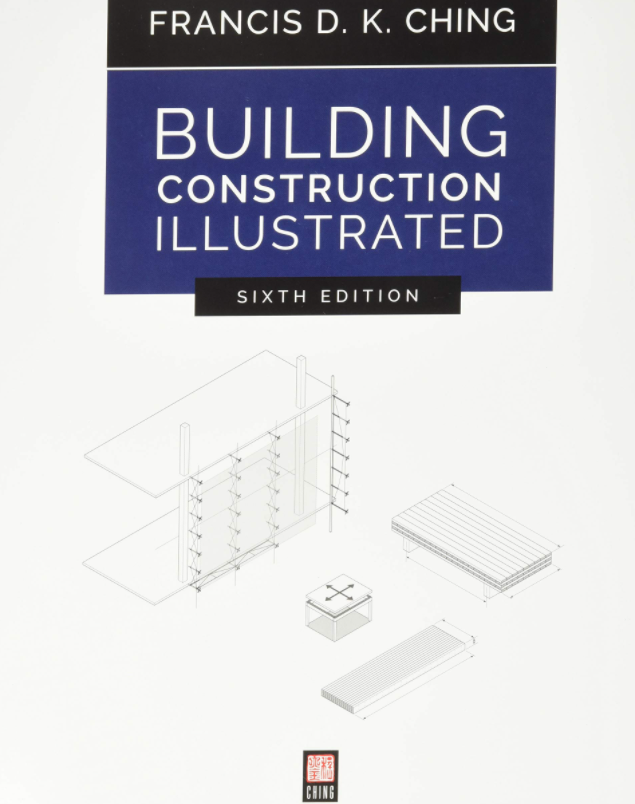Home Builders Guide to Continuous Improvement: Schedule, Quality, Customer Satisfaction, Cost, and Safety
Presenting well-known tools and techniques, the Home Builder’s Guide to Continuous Improvement provides important insights and necessary information to reduce cycle time duration and variation in order to improve quality and customer satisfaction and to minimize costs and accidents. Each chapter offers examples based on the authors’ personal experience working with builders and trade contractors. Including figures and graphs to enhance the text, this book contains simple language, using residential construction industry terminology to improve understanding of continuous improvement concepts and practices. No previous math background is required, making it suitable for all levels.
Contents:
Chapter Introduction……………………………………………………………………………..1
1.1 Purpose of Book ………………………………………………………………..1
1.2 Target Audience…………………………………………………………………2
1.3 Benefits of the Book…………………………………………………………..2
1.4 Examples………………………………………………………………………….3
1.5 Book Format……………………………………………………………………..3
2Chapter Cycle Time Management…………………………………………………………..7
2.1 Introduction ………………………………………………………………………7
2.2 Cycle Time Duration ………………………………………………………….7
2.3 Cycle Time Variation………………………………………………………….8
2.4 Lean Construction ……………………………………………………………..9
2.5 Example…………………………………………………………………………. 12
3Chapter Problems……………………………………………………………………………….. 13
3.1 Introduction ……………………………………………………………………. 13
3.2 Identification…………………………………………………………………… 13
3.3 Ranking …………………………………………………………………………. 14
3.4 Example…………………………………………………………………………. 16
4Chapter Problem Solving…………………………………………………………………….. 17
4.1 Introduction ……………………………………………………………………. 17
4.2 Objectives………………………………………………………………………. 17
4.2.1 Accuracy versus Precision ……………………………………. 18
4.3 Methodologies…………………………………………………………………20
4.3.1 Total Quality Management (TQM)…………………………20
4.3.2 Six Sigma…………………………………………………………… 21
4.3.2.1 Define …………………………………………………. 21
4.3.2.2 Measure ……………………………………………….22
4.3.2.3 Analyze………………………………………………..22
4.3.2.4 Improve………………………………………………..22
4.3.2.5 Control…………………………………………………23
4.3.3 Lean Six Sigma……………………………………………………23
4.3.4 Kaizen………………………………………………………………..25
4.2.5 B.U.I.L.D……………………………………………………………26
4.4 Example………………………………………………………………………….27
5Chapter Dealing with Data …………………………………………………………………..29
5.1 Introduction to Data………………………………………………………….29
5.1.1 What Are Data? …………………………………………………..29
5.1.2 Types of Data………………………………………………………29
5.1.2.1 Attribute/Discrete Data…………………………..29
5.1.2.2 Variable/Continuous Data……………………….30
5.1.2.3 Other Types of Data……………………………….30
5.1.3 What Is a Variable? ……………………………………………… 31
5.1.4 Types of Variables……………………………………………….. 31
5.1.4.1 Variable and Constant Data ……………………. 31
5.1.4.2 Dependent Variables……………………………… 31
5.1.4.3 Independent Variables …………………………… 31
5.1.5 Variable Relationships…………………………………………. 32
5.2 Data Accumulation………………………………………………………….. 32
5.2.1 Predata Collection ………………………………………………. 32
5.2.1.1 Data Stratification…………………………………. 32
5.2.1.2 Population Consistency/Uniformity………… 32
5.2.1.3 Sample Selection ………………………………….. 33
5.2.2 Data Collection…………………………………………………… 33
5.2.2.1 Data Collection Forms (Checklists and
Check Sheets) ……………………………………… 33
5.2.2.2 Data Collection Procedure……………………… 33
5.2.3 Data Sufficiency…………………………………………………..34
5.3 Data Analysis…………………………………………………………………..34
5.3.1 Measures of Central Tendency ………………………………34
5.3.1.1 Mean……………………………………………………34
5.3.1.2 Median…………………………………………………34
5.3.1.3 Mode…………………………………………………… 35
5.3.2 Measures of Dispersion ……………………………………….. 35
5.3.2.1 Range …………………………………………………. 35
5.3.2.2 Standard Deviation ………………………………..36
5.3.2.3 Quartile………………………………………………..36
5.3.2.4 Decile…………………………………………………..37
5.3.2.5 Percentile……………………………………………..37
5.3.3 Data Ranking………………………………………………………37
5.4 Data Patterns……………………………………………………………………38
5.4.1 Unimodal Curve ………………………………………………….38
5.4.2 Bimodal Curve…………………………………………………….39
5.4.3 Multimodal Curve………………………………………………..39
5.4.4 Symmetric Curve…………………………………………………39
5.4.5 Asymmetric Curve……………………………………………….39
5.4.6 Other Curves……………………………………………………….39
5.5 Example………………………………………………………………………….39
6Chapter Root Causes…………………………………………………………………………… 43
6.1 Introduction ……………………………………………………………………. 43
6.2 Determination…………………………………………………………………. 43
6.3 Selection ………………………………………………………………………… 47
6.3.1 Time………………………………………………………………….. 47
6.3.2 Budget………………………………………………………………..49
6.3.3 Personnel/Manpower……………………………………………49
6.3.4 Expertise …………………………………………………………….49
6.3.5 Software……………………………………………………………..50
6.4 Examples………………………………………………………………………..50
6.4.1 Example 1…………………………………………………………..50
6.4.2 Example 2………………………………………………………….. 51
7Chapter Corrective Actions …………………………………………………………………. 53
7.1 Introduction ……………………………………………………………………. 53
7.2 Determination…………………………………………………………………. 53
7.3 Selection …………………………………………………………………………54
7.3.1 Impact–Effort Matrix…………………………………………… 55
7.3.2 Quantified Force Field Analysis……………………………. 55
7.3.3 Prioritization Matrix …………………………………………….56
7.4 Implementation……………………………………………………………….. 57
7.4.1 Statistical Tests…………………………………………………… 58
7.4.1.1 Chi-Square (Test of Homogeneity) …………. 58
7.4.1.2 t-Test (for Independent Samples) ……………. 59
7.4.1.3 Analysis of Variance (ANOVA)……………….60
7.5 Example…………………………………………………………………………. 62
8Chapter Problem Follow-Up …………………………………………………………………63
8.1 Introduction …………………………………………………………………….63
8.2 Data Collection and Analyses…………………………………………….64
8.2.1 X-Bar & R and X-Bar & S Charts………………………….65
8.2.2 Individual and Moving Range (IMR) Chart…………….66
8.2.3 P Chart……………………………………………………………….66
8.2.4 Np Chart …………………………………………………………….66
8.2.5 C Chart and U Chart…………………………………………….66
8.2.6 Other Charts……………………………………………………….. 67
8.2.7 Shift Detection…………………………………………………….68
8.2.8 Process Capability ……………………………………………….68
8.3 Process Modification ………………………………………………………..72
8.4 Example………………………………………………………………………….72
9Chapter Relationships…………………………………………………………………………. 75
9.1 Determining Relationships between Data Sets ……………………. 75
9.2 Linear Relationships………………………………………………………… 75
9.3 Nonlinear Relationships……………………………………………………77
9.4 Other Relationships………………………………………………………….77
9.5 Predicting Linear Relationships………………………………………… 78
9.6 Example………………………………………………………………………….79
1Chapter 0 Sampling and Randomization ……………………………………………….83
10.1 Background …………………………………………………………………..83
10.2 Convenience Sampling……………………………………………………83
10.3 Judgment Sampling ………………………………………………………..83
10.4 Types of Random Sampling …………………………………………….84
10.4.1 Drawing Slips of Paper from a Bowl…………………….84
10.4.2 Random Number Tables……………………………………..84
10.4.3 Computer-Based Random Selection……………………..86
10.5 Applications of Sampling ………………………………………………..86
10.5.1 Population Mean………………………………………………..87
10.5.2 Population Proportion…………………………………………87
10.6 Example………………………………………………………………………..87
1Chapter 1 Sample Size Determination……………………………………………………89
11.1 Sampling……………………………………………………………………….89
11.2 Sampling Error………………………………………………………………89
11.2.1 Population Size…………………………………………………. 91
11.2.2 Precision ………………………………………………………….. 91
11.2.3 Confidence Level………………………………………………. 91
11.3 Population Proportion …………………………………………………….92
11.4 Example: Population Proportion ………………………………………93
11.5 Population Mean ……………………………………………………………96
11.6 Example: Population Mean ……………………………………………100
1Chapter 2 Software…………………………………………………………………………….. 103
12.1 Introduction ………………………………………………………………… 103
12.2 Excel………………………………………………………………………….. 103
12.3 QI Macro for Excel………………………………………………………. 104
12.4 Advanced Analytical Software ………………………………………. 104
12.4.1 Minitab ………………………………………………………….. 104
12.4.2 SPSS ……………………………………………………………… 105
12.4.3 SAS……………………………………………………………….. 105
12.5 Design Expert……………………………………………………………… 106
12.6 QFD Software……………………………………………………………… 106
12.6.1 QFD Capture ………………………………………………….. 106
12.6.2 QFD Designer…………………………………………………. 107
12.6.2.1 Tool for Business Improvements
(Compatible with MS Windows
95/2000 or NT) ………………………………… 107
12.6.3 QFD Online ……………………………………………………. 107
12.6.3.1 QFD Online’s “QFD Builder” ……………. 108
12.7 Microsoft Project…………………………………………………………. 108
1Chapter 3 Continuous Improvement Tools and Techniques …………………. 109
13.1 Introduction ………………………………………………………………… 109
13.2 Data Transformers……………………………………………………….. 109
13.2.1 Descriptive Tools…………………………………………….. 109
13.2.2 Diagnostic Tools……………………………………………… 109
13.3 Targeted Objectives……………………………………………………… 110
13.3.1 Analytical Tools………………………………………………. 110
13.3.2 Prescriptive Tools ……………………………………………. 110
13.4 Tools and Techniques …………………………………………………… 110
13.4.1 Seven Quality Control Tools……………………………… 110
13.4.2 Seven Management and Planning Tools……………… 111
13.4.3 Seven Supplemental Tools………………………………… 111
13.4.4 Seven Team Support Tools ……………………………….. 111
13.5 Alphabetized List of Continuous Improvement Tools and
Techniques………………………………………………………………….. 111
13.5.1 Affinity Analysis……………………………………………… 111
13.5.2 Activity Network Diagram (AND)…………………….. 112
13.5.3 Bar Chart ……………………………………………………….. 114
13.5.4 Box and Whisker Chart ……………………………………. 115
13.5.5 Brainstorming (Classical versus 635 versus
Imaginary): Classical Brainstorming………………….. 117
13.5.5.1 Interrelationships between Ground
Rules of Classical Brainstorming ……….. 117
13.5.6 Cause and Effect Analysis………………………………… 118
13.5.7 Check Sheet and Checklists………………………………. 119
13.5.8 Control Charts …………………………………………………120
13.5.8.1 Types of Control Charts…………………….. 121
13.5.9 Data Stratification……………………………………………. 121
13.5.10 Defect Map …………………………………………………….. 122
13.5.11 Events Log……………………………………………………… 122
13.5.12 Error or Mistake Proofing (Poka-Yoke) ………………. 122
13.5.12.1 Basic……………………………………………… 123
13.5.12.2 Intermediate …………………………………… 123
13.5.12.3 Advanced……………………………………….. 123
13.5.13 Five Whys……………………………………………………….124
13.5.14 Forced Choice………………………………………………….126
13.5.15 Histogram ……………………………………………………….126
13.5.16 Interrelationship Digraph………………………………… 127
13.5.17 Line Graph……………………………………………………. 128
13.5.18 List Reduction ………………………………………………. 129
13.5.19 Matrix Analysis …………………………………………….. 130
13.5.20 Mind Mapping………………………………………………. 131
13.5.21 Multivoting …………………………………………………… 134
13.5.21.1 Multivoting Example……………………… 135
13.5.22 Nominal Group Technique ……………………………… 136
13.5.22.1 Nominal Group Technique Example… 137
13.5.23 Paired Comparisons……………………………………….. 137
13.5.24 Pairwise Ranking…………………………………………… 138
13.5.25 Pareto Analysis……………………………………………… 140
13.5.26 Prioritization Matrix ………………………………………. 140
13.5.27 Process Decision Program Chart……………………… 142
13.5.28 Process Flowchart versus Process Map …………….. 143
13.5.28.1 Process Flowchart………………………….. 143
13.5.28.2 Process Map …………………………………. 145
13.5.29 Progress Center……………………………………………… 147
13.5.30 Project Status/Power Curve (PS/PC)………………… 147
13.5.30.1 Scope the Complete Project ……………. 148
13.5.30.2 Scope the Individual Project Phases…. 148
13.5.30.3 Convert Individual Project Phase
Durations into Percentages……………… 148
13.5.30.4 Create the PS/PC Baseline ……………… 149
13.5.30.5 Plotting Project Status against the
Project Baseline …………………………….. 150
13.5.30.6 Another Example…………………………… 150
13.5.31 Quantified Force Field Analysis………………………. 151
13.5.32 Random Sampling …………………………………………. 152
13.5.33 Run Chart……………………………………………………… 153
13.5.34 Samples versus Populations…………………………….. 153
13.5.35 Scatter Analysis…………………………………………….. 154
13.5.36 Tally Sheet ……………………………………………………. 154
13.5.37 Tree Diagram………………………………………………… 156
1Chapter 4 Quality Function Deployment……………………………………………… 157
14.1 Introduction ………………………………………………………………… 157
14.2 Kano Model………………………………………………………………… 159
14.2.1 The MUSTs ……………………………………………………. 160
14.2.2 The WANTs……………………………………………………. 161
14.2.3 The WOWs…………………………………………………….. 161
14.2.4 Changes over Time versus Competition……………… 161
14.2.5 How to Create WOWs/Attractive Quality …………… 162
14.3 The WHAT–HOW Concept…………………………………………… 163
14.4 The House of Quality …………………………………………………… 165
14.5 Advantages and Limitations of QFD………………………………. 166
14.6 QFD Software……………………………………………………………… 167
14.7 Example……………………………………………………………………… 170
1Chapter 5 Design of Experiments ……………………………………………………….. 171
15.1 Approaches to Experimental Design ………………………………. 171
15.2 Objectives of DOE ………………………………………………………. 172
15.3 Factorial Designs…………………………………………………………. 172
15.4 Fractional Factorial Designs………………………………………….. 173
15.5 Screening Designs……………………………………………………….. 175
15.6 Robust Design/Taguchi Methods …………………………………… 177
15.7 Optimization Designs…………………………………………………… 178
15.8 Planning and Running DOE………………………………………….. 180
15.9 Types of Experiments…………………………………………………… 180
15.10 Before the Statistician Arrives……………………………………….. 182
15.11 Orthogonal Array…………………………………………………………. 183
15.12 Glossary of DOE Terms……………………………………………….. 186
15.13 Example……………………………………………………………………… 186
Comprehensive Glossary of Continuous Improvement Terms…………………… 189
Pertinent Web Sites Addressing Continuous Improvement ………………………. 197
Index………………………………………………………………………………………………………. 199












